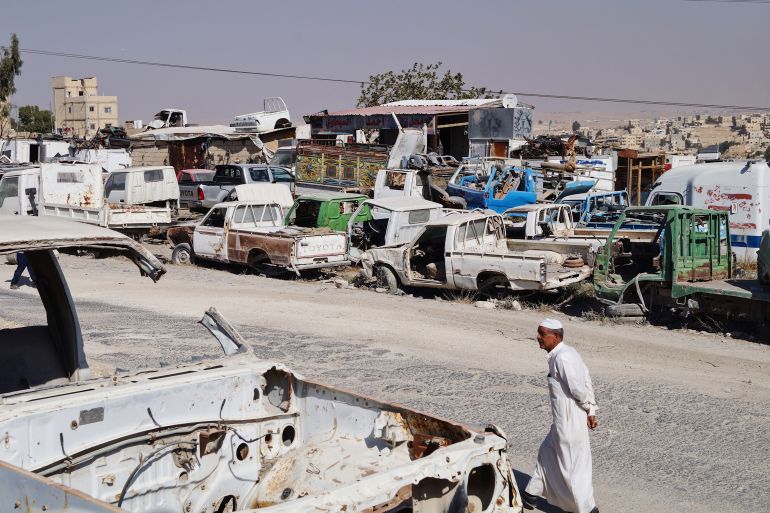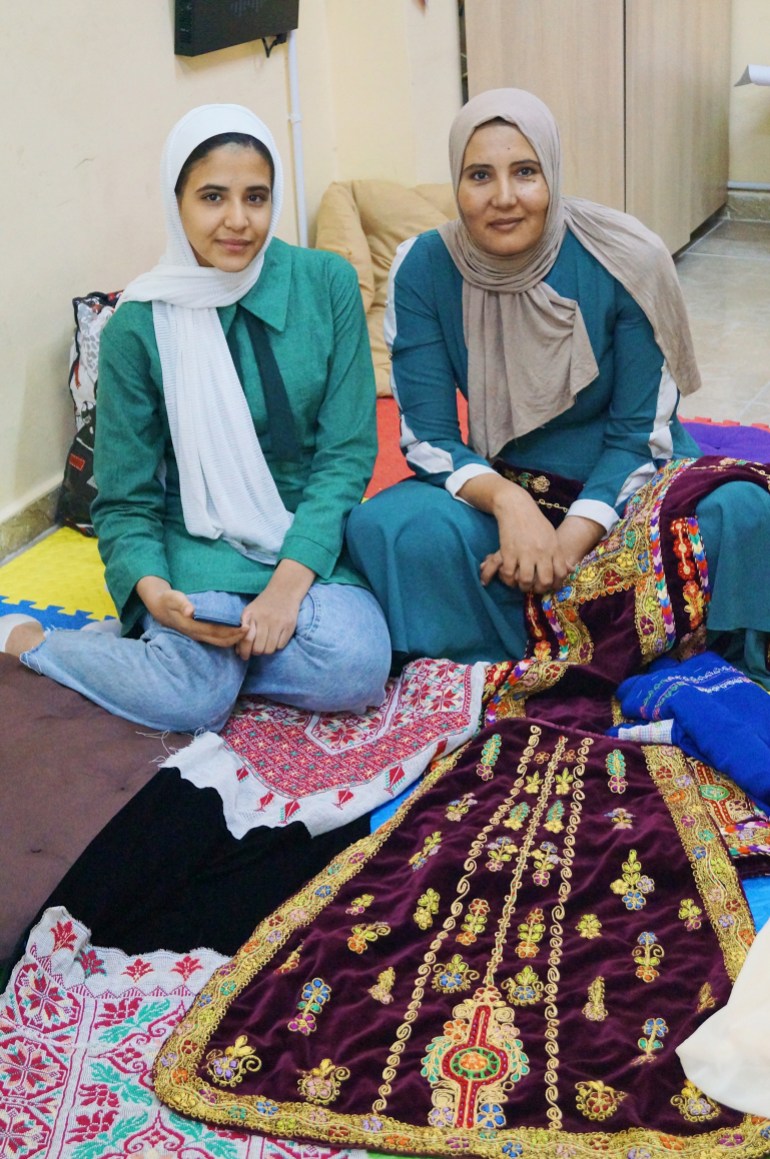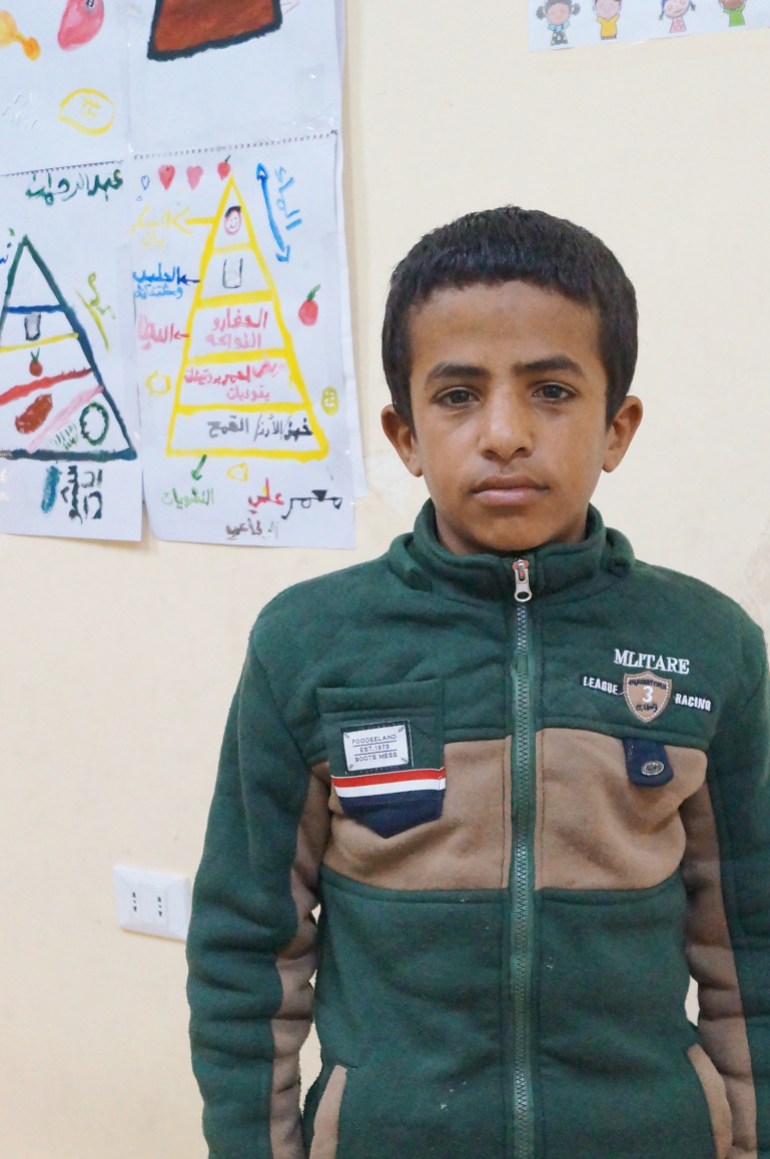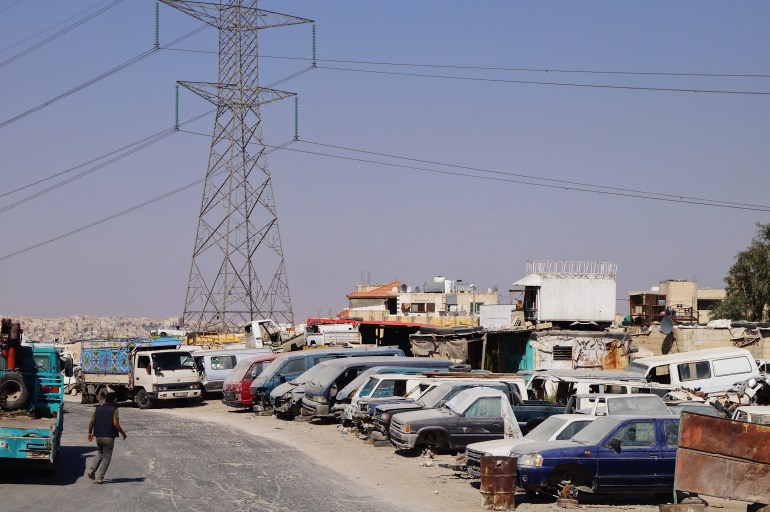Child labour on the rise among Jordan’s most vulnerable
‘Deteriorating’ economic conditions in the kingdom have forced thousands more children into hazardous work, including living in a rubbish dump.

Zarqa, Jordan – On the outskirts of Russeifa, children sort through mounds of garbage in hope of finding something salvable: an aluminium bottle cap, a glass bottle, a cardboard box. Some children come to work in the landfill from the nearby village, others come from far, many from the kingdom’s refugee camps.
The kids spend days, up to weeks, living among the rubbish, eating expired food, and breathing the fumes of burning plastic.
Keep reading
list of 4 itemsMy Own Private History in Jordan, Egypt and Tunisia
Copper mine threatens Jordan’s largest nature reserve
Jordan king exposed over tax havens and luxury homes
Only a short drive from the landfill is a scrapyard, which spans almost 3km (1.2 miles). Here, children collect scrap metal, to later sell for a few Jordanian dinars. Piles of 1960-era cars hide what happens in the scrapyard from authorities’ sight, leaving the children susceptible to gang membership and violence.
In these locations, children work in hazardous conditions with dangerous machinery, heavy loads, long hours, and unhealthy living conditions. The National Child Labor Survey in 2016, Jordan’s most recent statistics on child labour, found almost 76,000 children were engaged in economic activity, 60 percent of whom work in risky environments.
However, multiple sources estimate in recent years, this number has more than doubled, especially given the pandemic-related economic hardships.
Ahmad al-Battat, the director of Rowad Alkhair Society, an organisation that helps vulnerable children get out of the worst forms of child labour, told Al Jazeera that based on inspectional visits and observation “we feel that the numbers have at least doubled”.
Rowad Alkhair Society is a UNICEF initiative and it provides technical and monetary support.
Chief of Child Protection at UNICEF in Jordan, Mariyampillai Mariyaselvam, told Al Jazeera, “It is obvious, from observations in our day to day work, that child labour has increased in the post-COVID situation.”
Ahmad Awwad, the director of the Jordan Labor Watch, added, “By direct observations of the streets, now the number of child labourers has increased,” adding based on his estimations there are close to 150,000 child labourers in Jordan.
“The largest reason for child labour is the living conditions of families,” said Awwad. “If the living conditions worsen, children will leave school and integrate into the labour market at an early age.”
Jordan’s youth unemployment rate has reached a staggering 53.7 percent and the general unemployment rate is now at an unprecedented 24.8 percent, according to the Department of Statistics (DoS) website. The kingdom’s population has nearly doubled in the last 10 years, which has pressured the country’s social support systems and contributed to the growing, unregulated informal sector.
“The living conditions of most Jordanians now are deteriorating,” said Awwad.

Working kids
Razan, 15, from a village in the Russeifa area, dropped out of school when her father’s living situation was severely affected by the pandemic. She had to spend extra time helping her mother tailor clothes to cover her family’s living expenses.
“I felt guilty because my daughter had to work … I felt it was unjust for my child,” Razan’s mother told Al Jazeera.
“She showed signs of sadness, feeling unsafe, and was afraid of the future,” said Haneen Hasan Mohammad, a Rowad Alkhair Child Protection adviser. Mohammad added Razan was also exposed to “early child marriage according to community customs”.
The Rowad Alkhair Society has since provided her mother with financial assistance to build her own project, helping the family become financially sustainable and allowing Razan to return to school.
Ahmad, also 15, collects and sells scrap metals in Abu Sayyah village, in the Russeifa area, to help his grandfather cover basic living expenses and support his three younger siblings.
“I go and collect scraps, whatever I can find,” he told Al Jazeera, adding the work is “really hard and tiring”.
“I do my work on foot so I have to carry everything I find,” he said, describing the bag he carries as “really heavy”.
“I work alone,” he added, “without the help of anyone.”
This past June, Rowad Alkhair found Ahmad showing signs of “fatigue, exhaust, lack of self-confidence and not feeling safe”, according to Mohammad.
Ahmad used to work 12 hours a day collecting scrap metals, but after the help of Rowad Alkhair Society, he only works “every two or three days”.

Out of sight
Since December 2020, Rowad Alkhair has provided support for more than 400 children involved in the worst forms of child labour in the Russeifa area, said Mohammad. However, she added, there are still many children who continue to toil in dangerous environments.
Russeifa is overcrowded, said al-Battat. The city has the second-highest population per square metre globally, after Gaza, he added, explaining the cheap cost of living has attracted Palestinian, Iraqi and Syrian refugees.
The high population has contributed to the growth of the landfill and factories on the city’s outskirts, where many children from the surrounding villages, such as Ahmad, go to work.
“The main reason [for child labour] is poverty,” said al-Battat. “There is a high population, cheap labour, and no supervision.
“No one is monitoring, no one is checking. The area is isolated from people,” he added, referring to the scrapyard near Abu Sayyah village.
In the landfill and scrapyard, where the children work in hazardous conditions, “the contractors have the authority. It is very hard for the government to reach them”, said al-Battat.
When authorities arrive, the contractors tell the children to hide behind the piles of rubbish and scrap metal. “When we started to work with them, we couldn’t find the children,” said Mohammad.
Out of sight from authorities, the children are often subject to gang violence and abuse. “The kids are often less confident because they have faced abuse from their bosses. They are also often aggressive towards the community,” Mohammad said.
She said when the Rowad Alkhair centre first opened, the children from the scrapyard would bring their knives. “They weren’t able to understand that it was a safe place for them.”
When Ahmad first arrived at the centre, he experienced bullying and constant physical and psychological stress, according to Mohammad. When asked what he enjoys about Rowad, he said he likes learning, but also “the self-defence skills we learn, like how to protect ourselves”.
Many children suffer from poor health conditions, especially in the landfill, where they often live for days at a time. “We found that the children have many problems with nutrition,” said Mohammad.
“They have problems with their kidneys because they don’t drink enough water … They suffer from stomach issues because they work long hours and don’t have a lot of food and so eat the expired food that comes to the landfill.”
Fires also break out in the dump, noted Mohammad, when the sun’s rays ignite the flammable gases, which exposes the children to poisonous fumes.
“Some kids in the landfill die, and you wouldn’t know that they are dead amid all the trash,” she said.

Contributing causes
While the contributors to child labour are rooted in poverty, they also involve other complex factors, including embedded social norms and a lack of child services.
“The boys like me work,” said Ahmad. “The boys in my neighbourhood continue playing until the fifth or sixth grade and then once they get to the ninth grade they stop.”
“There are social norms in Abu Sayyah village that when the child reaches 14 or 15 he should go to work, to be a man,” explained Mohammad.
In Al Saed village, which is next to the landfill, Mohammad added, “When they [the children] become seven or 10 years old, they often go with their fathers to the landfill.”
The prevalence of child labour in the area is only exacerbated by the lack of services for children. “The schools are really crowded, there are maybe 50 boys in one class,” said Mohammad. In Abu Sayyah village, the boy’s school only goes until the 10th grade and the transportation costs often prevent the children from getting to the high school, she said.
In the villages, according to Mohammad, there are not “proper places for kids, like play areas”. However, when a child expects to work at such a young age, simply adding play areas is not a quick fix.
“When we went to build the playground,” said al-Battat, “it was in the kids’ mindset that anything in their hands is sellable. We put the see-saw and the swings in a standard way, but then after a while we checked and the kids were trying to take them apart and sell them. This is what they are used to.
“Imagine, little kids and they don’t know how to play on a playground. What they’re used to is the landfill they work in,” al-Battat said.
“It has taken us a long time to address the norms of these families,” said Mohammad, but she added with education and support, the ideas and dreams of the children have begun to change.
“In the beginning, one of the children said: ‘I want to be the head of the landfill,’ but now,” said Mohammad, “the child says, ‘I want to be an engineer to rebuild the garbage plant.’”